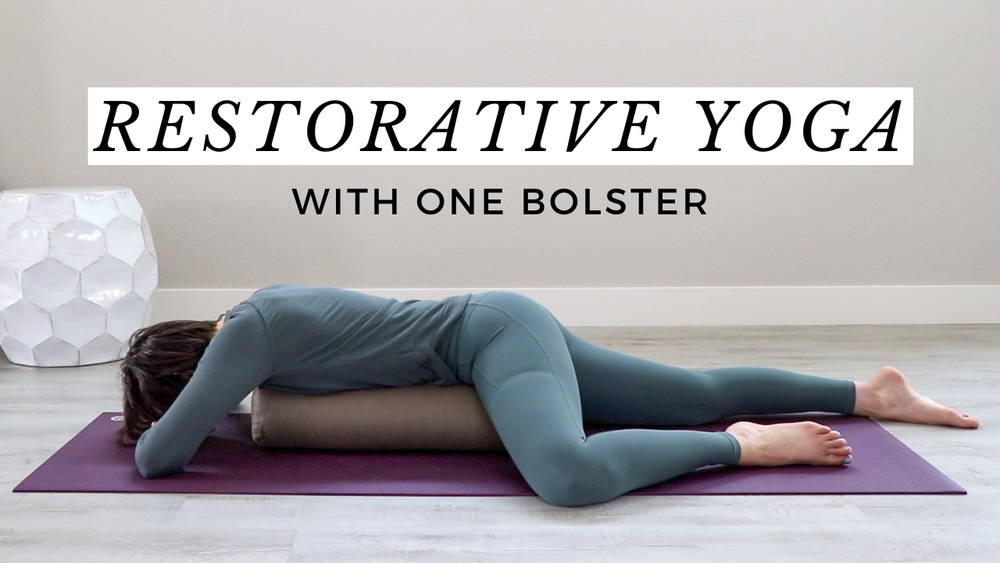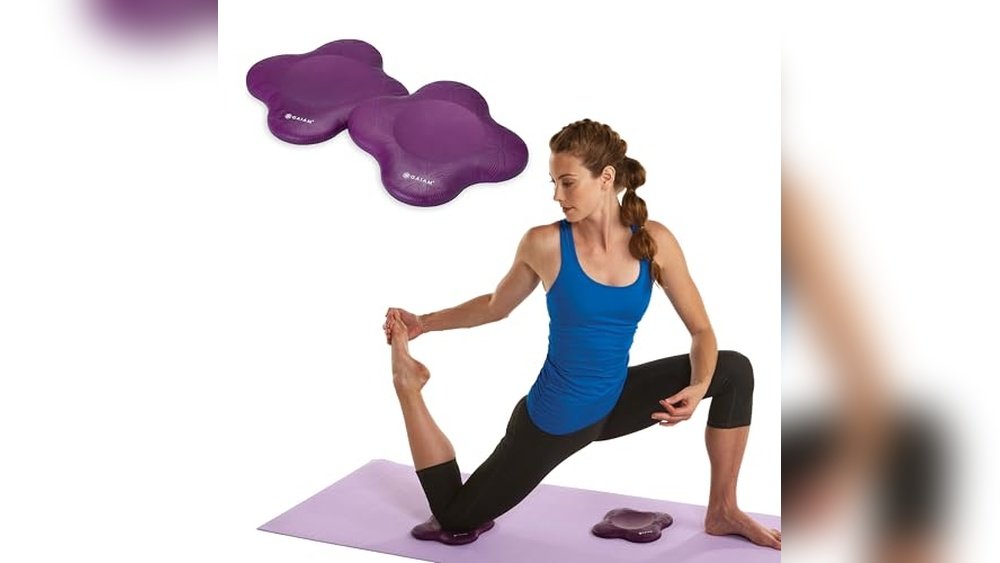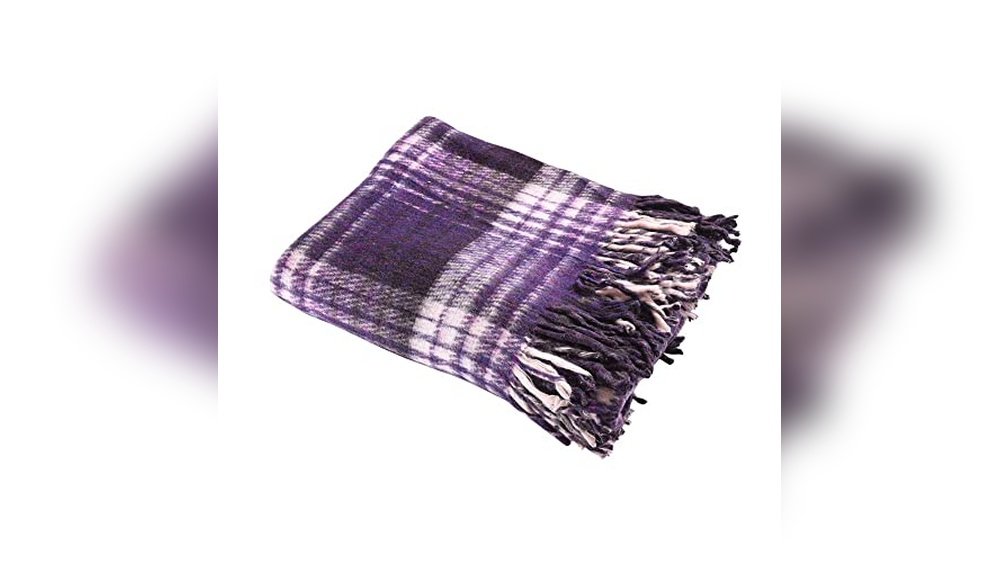Are you feeling stressed, tired, or overwhelmed? Restorative yoga poses with a bolster could be exactly what your body and mind need right now.
These gentle stretches help you relax deeply, ease tension, and recharge your energy. You’ll discover simple yet powerful poses that use a bolster to support your body, making it easier to unwind completely. Keep reading to learn how these poses can bring calm and comfort to your daily routine.
Benefits Of Restorative Yoga
Restorative yoga with a bolster offers many benefits for the body and mind. It uses gentle poses supported by props to relax deeply. This practice helps you rest fully while stretching safely. Many people find relief from stress and tension through these calm postures. Each session invites peace and balance into your daily life.
Calming The Nervous System
Restorative yoga slows your breathing and heart rate. The gentle support of a bolster helps your body feel safe. This comfort signals the nervous system to relax. Stress hormones decrease, and relaxation hormones increase. Your mind becomes quieter, and worries fade. A calm nervous system improves sleep and reduces anxiety.
Improving Flexibility Gently
Using a bolster allows slow and easy stretching. Muscles release tension without strain or pain. Poses hold longer, encouraging deeper relaxation of tissues. This helps joints move better over time. Flexibility grows without pushing the body too hard. Gentle stretching supports healing and prevents injuries.
Enhancing Mental Clarity
Restorative yoga invites stillness and focus. The slow pace helps clear scattered thoughts. Your mind becomes more alert and fresh after practice. It reduces mental fatigue and sharpens concentration. This clarity helps you handle daily tasks calmly. A peaceful mind leads to better decisions and creativity.

Credit: modernhippiehabits.com
Choosing The Right Bolster
Choosing the right bolster is key for a good restorative yoga practice. The right bolster supports your body and helps you relax deeply. Picking the correct type, size, and material makes a big difference. It improves comfort and helps you hold poses longer.
Types Of Bolsters
There are many bolster types for yoga. Some are cylindrical, others rectangular or square. Cylindrical bolsters work well for backbends and hips. Rectangular bolsters offer broad support for longer holds. Some bolsters have flat sides to prevent rolling. Pick the shape that suits your favorite poses.
Size And Firmness Considerations
Size matters to fit your body well. A bolster too small won’t support you enough. Too large can feel bulky and awkward. Firmness affects how much your body sinks in. Firmer bolsters hold shape under weight. Softer ones give a gentle, cushioned feel. Choose firmness based on your comfort and pose needs.
Materials And Covers
Bolsters come in different materials inside and out. Common fillings include cotton, foam, or buckwheat hulls. Cotton is soft but less supportive. Foam holds shape well and lasts longer. Buckwheat hulls adjust to your body shape. Covers can be cotton, linen, or synthetic. Pick covers that feel soft and are easy to clean. Breathable fabric helps keep you cool.
Setting Up Your Space
Setting up your space for restorative yoga with a bolster helps create a calm and inviting area. A well-prepared space supports relaxation and deeper stretches. It also makes your yoga session more comfortable and effective.
Creating A Quiet Environment
Choose a spot away from noise and distractions. Silence helps your mind focus on breathing and relaxation. Turn off phones or place them in silent mode. Use noise-canceling headphones or soft background sounds if needed. A quiet space lets you unwind fully.
Using Props Alongside Bolsters
Gather extra props like blankets, blocks, and straps. These support your body and increase comfort. Place them close to your yoga mat for easy reach. Use blankets for warmth and cushioning. Blocks and straps help maintain correct posture.
Optimal Lighting And Temperature
Keep lighting soft and gentle on the eyes. Natural light is best but use dim lamps if needed. Avoid harsh, bright lights that can cause tension. Set the room temperature to a warm and cozy level. A comfortable temperature helps muscles relax better.

Credit: www.carenbaginski.com
Essential Restorative Poses With Bolster
Restorative yoga with a bolster helps your body relax deeply. It supports your muscles and joints. This support lets you stay longer in each pose. The result is less tension and more calm. Below are some essential poses with a bolster to try.
Supported Child’s Pose
Place the bolster lengthwise under your chest. Kneel and fold forward to rest your torso on it. Stretch your arms alongside the bolster or forward. This pose gently opens your hips and soothes your back. It feels like a soft hug for your body.
Reclining Bound Angle Pose
Sit with the soles of your feet together. Lie back and place the bolster under your spine. Let your arms rest by your sides or on your belly. This pose opens your chest and hips slowly. It encourages deep breathing and peaceful rest.
Supported Bridge Pose
Lie on your back with knees bent and feet flat. Slide the bolster under your lower back for support. Keep your arms relaxed at your sides. This pose gently lifts your chest and opens your front body. It relieves tension in the spine and shoulders.
Bolstered Legs-up-the-wall
Sit next to a wall and place the bolster near it. Lie down and rest your legs up on the wall, over the bolster. Let your arms relax by your sides. This pose helps improve circulation and calms the nervous system. It feels very restful for tired legs.
Supported Savasana
Lie on your back with the bolster under your knees. Let your arms rest comfortably at your sides. Close your eyes and breathe slowly. This final pose helps your whole body relax deeply. It seals the benefits of your restorative practice.
Breathing Techniques For Deep Relaxation
Breathing techniques play a key role in restorative yoga with a bolster. They help calm the mind and relax the body deeply. Controlled breathing slows the heart rate and reduces stress. It brings your focus inward, enhancing the restful effects of the yoga poses. Practicing these breaths improves oxygen flow and soothes the nervous system. Each breath method supports a peaceful, quiet mind and relaxed muscles.
Diaphragmatic Breathing
Diaphragmatic breathing, also called belly breathing, fills the lungs fully. Breathe deeply through your nose and let your belly rise. Exhale slowly, feeling your belly fall. This breath uses the diaphragm muscle below the lungs. It helps lower stress and promotes calmness. Practice it while lying on your bolster for extra support.
Alternate Nostril Breathing
Alternate nostril breathing balances the left and right brain sides. Close one nostril and inhale through the other. Switch nostrils to exhale and repeat. This method clears the mind and brings steady energy. It reduces anxiety and enhances focus. Use it at the start or end of your practice.
Ujjayi Breath
Ujjayi breath creates a soft ocean-like sound in your throat. Inhale and exhale through your nose with a slight constriction in the throat. This breath builds heat and steadiness in the body. It helps maintain focus and calm during poses. Use a bolster to support your body while practicing ujjayi breath.
Tips For A Successful Practice
Practicing restorative yoga with a bolster helps your body relax deeply. Success in this practice depends on gentle attention and patience. Follow simple tips to get the most from each session. These tips support your calm and healing experience.
Listening To Your Body
Pay close attention to how your body feels during poses. Stop if you feel pain or discomfort. Adjust the bolster or your position to ease tension. Your body knows what it needs. Respect its signals to avoid injury and relax fully.
Maintaining Stillness
Hold each pose without moving too much. Stillness helps muscles release tightness and stress. Focus on your breath to stay calm and grounded. Small movements can break the flow of relaxation. Stay quiet and still for deeper rest.
Duration And Frequency
Rest in each pose for at least five minutes. Longer holds help your body unwind completely. Practice restorative yoga two to three times a week. Regular sessions bring lasting benefits to your mind and body. Consistency beats rushing through poses.
Common Mistakes To Avoid
Restorative yoga with a bolster helps the body relax deeply. Many beginners make common mistakes that reduce its benefits. Avoiding these errors ensures a safe and calming practice. Here are key mistakes to watch for.
Overstretching
Restorative yoga is about gentle support, not deep stretching. Pushing too far can cause muscle strain or pain. Use the bolster to support your body fully. Let your muscles relax instead of forcing a stretch.
Ignoring Discomfort
Discomfort signals your body needs adjustment. Do not ignore tightness or sharp pain. Shift your position or add more support with the bolster. Comfort is essential for true relaxation and healing.
Rushing Through Poses
Restorative yoga needs slow, mindful movement. Moving too fast can reduce relaxation and increase tension. Hold each pose for several minutes. Breathe deeply and allow your body to settle fully.
Incorporating Restorative Yoga Into Daily Life
Restorative yoga with a bolster brings calm and ease to daily life. This gentle practice helps the body relax deeply. It supports the muscles and joints while you rest in each pose. Adding restorative yoga to your routine can improve your mood and energy. Small daily sessions create lasting benefits for both body and mind.
Choose the best time for your practice to fit your lifestyle. Restorative yoga is flexible and works well any time of day. This makes it easier to stay consistent and enjoy the calm it brings.
Morning Vs Evening Sessions
Morning sessions wake up the body softly. They help you start the day with peace and focus. Using a bolster supports gentle stretches that open your chest and back. This improves breathing and alertness.
Evening sessions calm the nervous system. They prepare the body for restful sleep. Restorative poses with a bolster reduce tension built during the day. This helps you release stress and relax deeply before bed.
Combining With Meditation
Restorative yoga pairs well with meditation. Both practices promote mindfulness and calm. Use a bolster to support a comfortable seated or reclined posture. Focus on your breath and let your mind settle. This combination enhances relaxation and mental clarity.
Even a few minutes of meditation during restorative poses can boost calmness. It helps quiet racing thoughts and centers your attention. Try this to deepen your practice and find inner peace.
Using Yoga To Manage Stress
Restorative yoga helps reduce physical and mental stress. Holding supported poses lowers heart rate and relaxes muscles. The gentle stretch signals your body to unwind.
Practicing daily helps build resilience against stress. The slow pace encourages mindfulness and self-care. Using a bolster ensures comfort and safety, making it easier to let go of tension.

Credit: www.youtube.com
Frequently Asked Questions
What Are The Benefits Of Restorative Yoga Poses With Bolster?
Restorative yoga with bolsters promotes deep relaxation and stress relief. It supports the body, improving posture and flexibility. This practice enhances breathing and reduces muscle tension, making it ideal for recovery and mindfulness.
How Do Bolsters Enhance Restorative Yoga Practice?
Bolsters provide gentle support, allowing muscles to relax fully during poses. They help maintain correct alignment and reduce strain. This support deepens relaxation and improves comfort, making restorative yoga more effective and accessible for all levels.
Which Restorative Yoga Poses Use A Bolster?
Common poses include Supported Child’s Pose, Reclining Bound Angle, and Legs-Up-The-Wall with bolster. These poses open the hips, stretch the back, and calm the nervous system. Bolsters make these poses more comfortable and restorative.
Can Beginners Practice Restorative Yoga With Bolsters?
Yes, beginners benefit greatly from bolsters in restorative yoga. They offer support and stability, making poses easier and safer. This helps beginners relax deeply and avoid injury while building flexibility and mindfulness.
Conclusion
Restorative yoga poses with a bolster help your body relax deeply. They ease tension and calm your mind after a busy day. Using a bolster supports your body in gentle, safe ways. This makes it easier to hold poses longer and feel peaceful.
Try adding these poses to your routine for better rest and less stress. Small changes can bring big comfort. Give your body the care it needs with simple, restful yoga. Feel the calm and enjoy each moment fully.



